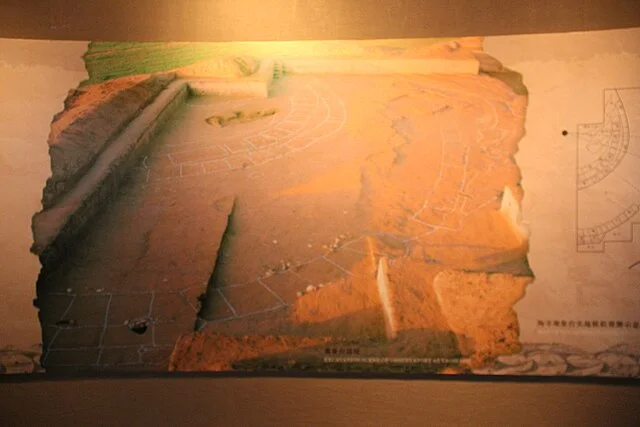The Taosi Observatory is an ancient site in Shanxi Province, China. It dates back to around 2100 BC during the late Neolithic period. Archaeologists believe it was part of the Taosi culture, which is linked to the Longshan culture. The observatory is significant because it reflects early Chinese efforts to track celestial events, including solstices and equinoxes.
Get your dose of History via Email
Discovery and Excavation
In 1978, Chinese archaeologists discovered the Taosi Observatory during excavations of the Taosi site. They found a large semi-circular structure with 13 standing stones arranged in an arc. Each stone appeared aligned with specific solar events. Further excavations in 2003 revealed more details, including the use of the site to observe the movements of the sun.
Function of the Observatory
The observatory allowed ancient people to track the changing seasons. It is thought to have been used to mark the winter and summer solstices, as well as the spring and autumn equinoxes. By aligning the stones with the horizon, early astronomers could track the sun’s position at key points of the year. This would have helped in agricultural planning and religious practices.
Astronomical Alignment
The structure’s alignment suggests an advanced understanding of solar movement for its time. Researchers believe the Taosi people used the observatory to observe the horizon as the sun rose and set. Each stone in the arc marked a specific point on the horizon that corresponded to important seasonal changes. These observations were critical for organizing their agricultural activities.
Cultural Importance
The Taosi Observatory is not only an astronomical site but also a significant cultural artifact. It offers insight into the role of astronomy in early Chinese society. By understanding celestial events, the Taosi culture could develop calendars and religious ceremonies. These activities reflected the connection between their daily lives and the cycles of nature.
Comparison to Other Observatories
The Taosi Observatory predates other well-known ancient observatories, such as Stonehenge in England and Nabta Playa in Egypt. While these structures also tracked solar movements, the Taosi site is unique in its design and layout. The structure’s sophistication suggests that early Chinese societies had a more advanced knowledge of astronomy than previously thought.
Preservation and Study
Today, the Taosi Observatory is an important archaeological site. Researchers continue to study the area to understand more about its construction and use. The Chinese government has preserved the site, recognizing its value in the history of ancient Chinese science and astronomy.
Conclusion
The Taosi Observatory represents an early achievement in human understanding of celestial events. Built around 2100 BC, it provided vital information for agriculture, ritual, and social organization. Its discovery highlights the importance of astronomy in ancient China, offering a window into how early societies interacted with the natural world.
Source:

